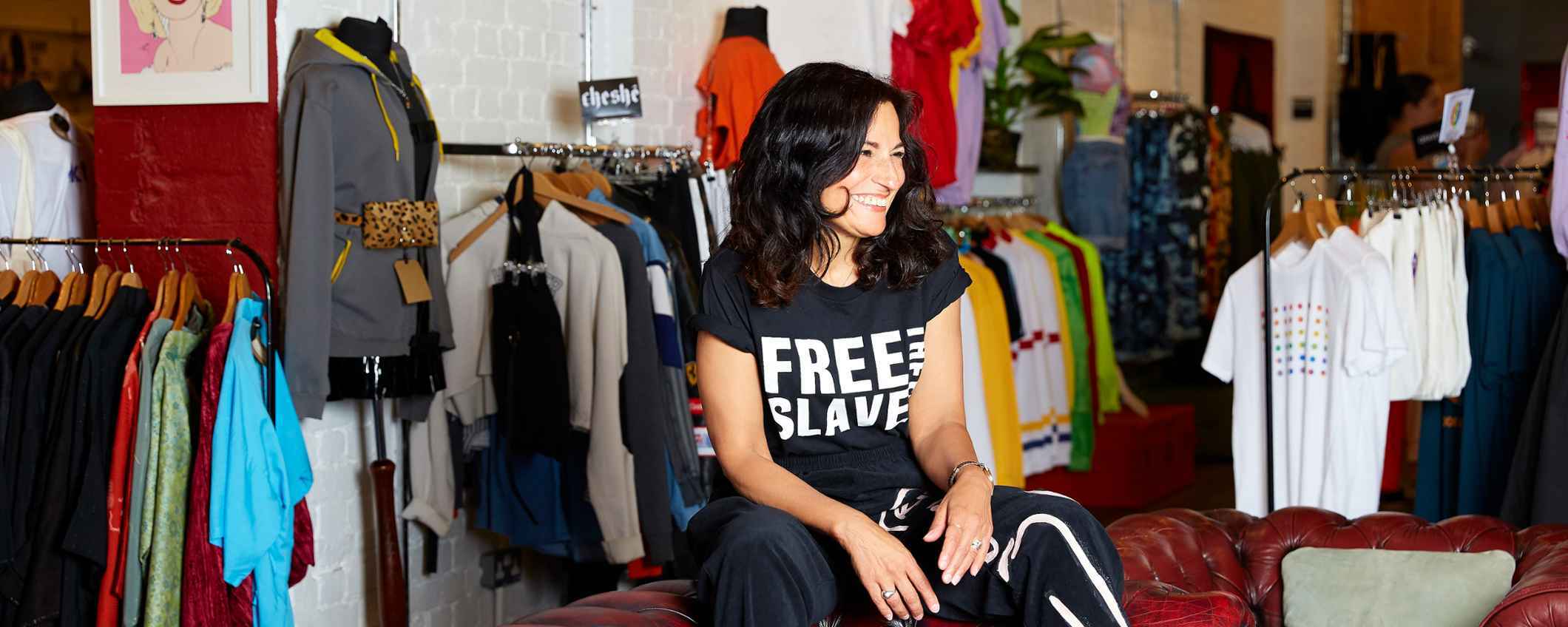Having founded People Tree, a pioneering fair trade fashion brand, in 1991, Safia has gone on to use her deep understanding of the fashion industry to campaign and advise on issues including sustainable supply chains, ethical business and climate action. In 2022, she set up Fashion Declares, a grassroots movement to accelerate change in the sector.
We caught up with Safia to find out about her latest work.
What is regenerative fashion and what makes it different to sustainable fashion?
Sustainable fashion should always have been regenerative, but it didn’t go far enough or quickly enough! I believe that this is because of our entrenched ways of doing business and finance, as well as insufficient legal frameworks and public awareness. We are at the point of a global emergency, with ecosystems breaking down, so all industrial activity needs to switch to being regenerative.
Regenerative fashion offers a new way of doing fashion. It focuses not just on regenerative agriculture, but on every step of the process – from fibres and production, through to marketing and end of garment life. It’s about restoring what fashion has taken from the natural world and communities – caring for the land while promoting thriving livelihoods through farming and textile crafts.
What effect does the mainstream fashion industry have on nature and biodiversity?
Since the 1980s, we’ve shifted fashion manufacturing from Europe to the Global South, specifically Asia. Therefore, we’ve shifted the pollution and nature loss, and distanced ourselves from the impact.
Fashion is a hugely water-intensive industry and is the third largest user of water globally. It’s also a huge pollutant with chemical dyes and toxic chemicals used for material dyeing, finishing and leather processing. The average amount of global industrial water pollution that can be attributed to garment manufacturing is 20%.
Conventional cotton is also a culprit. Although growing cotton accounts for only 2.4% of the world’s cultivated land, it uses 6% of pesticides and 16% of insecticides. And two-thirds of all new clothing is made from plastic, including polyester, nylon and acrylic. Fast and disposable fashion is a time bomb and we need to kick out the fossil fuel prop supporting the fashion industry.
Overall, the fashion industry leaves a trail of death and pollution that hugely effects the living world and biodiversity, and people in the Global South are facing the brunt of social, ecological and climate breakdown.
We need to recognise the responsibility that we have in the so-called North. We continue to promote the dominant business models that are based upon exploitation and, in a sense, are a continuation of a colonialist project.
How can we ensure that the regenerative fashion movement is socially inclusive?
First up, we must pay more for clothes and textiles, and we must demand that brands and retailers do the same. We need to pay living wages to farmers and factory workers, and demand transparency and accountability from brands. When we call for fair trade we’re not asking for anything that should be special or unique, that’s just the starting line. This comes through supporting organisations that work for workers’ rights like Clean Clothes Campaign, Fashion Revolution and War on Want.
There are 70 million garment workers worldwide. A just transition means finding ways for people to earn decent livelihoods and ensuring that we’re meeting human rights by paying a fair wage and sharing the benefits of trade. At the moment, workers in our supply chains bear the brunt of all risks.
Building from these vital foundations, celebrating textile diversity and handcrafted traditions could then bring a refreshing shift from the dominance of Western fashion.
What positive innovation are you seeing in the world of sustainable fashion?
I founded Fashion Declares as a bottom-up movement for people working in fashion, centred on five goals for a just transition. Collaborating with like-minded sustainability fashion leaders and experts, we’re driving a shift in industry practice.
The dominant culture and business models must change now to avert a catastrophe. For instance, handwoven organic cotton fabrics are beginning to be included in collections and provide work for women in rural areas.My book Regenerative Fashion showcases innovative solutions like plant-based leather, kelp-based and agricultural waste fabrics – what is currently lacking is the imagination for finance and legislative framework.
What also interests me is how degrowth meets fashion – we currently produce up to 100 billion garments each year and this needs to be cut down by 75% or more. Rather than buying 35 new garments a year, how can we be comfortable buying three to five a year? Having a smaller wardrobe with clothes we love and treasure will make mornings easier and give us more time for other important stuff in life!




Thanks for joining the conversation.
We've sent you an email - click on the link to publish your post.